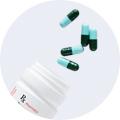How to Determine the Exact Usage of industrial coating supplies

Calculating the exact usage of industrial coating supplies requires a systematic approach that integrates substrate characteristics, coating properties, application methods, and practical construction factors. Below is a step-by-step guide to ensure accurate dosage estimation:
1. Calculate the Total Surface Area to Be Coated
The first core step is to determine the total area of the substrate (e.g., metal structures, machinery parts, concrete surfaces) that needs coating. This forms the baseline for subsequent calculations.
- For regular-shaped substrates (e.g., flat plates, cubes, cylinders): Use standard geometric formulas.
- Flat surfaces: Area = Length × Width
- Cylinders (external coating): Area = 2πr×Height (r = radius; exclude the top/bottom if uncoated)
- Cuboids: Area = 2×(Length×Width + Length×Height + Width×Height) (subtract areas of uncoated parts like openings or joints).
- For irregular-shaped substrates (e.g., complex machinery, curved pipes):
- Use 3D scanning tools to generate a digital model and calculate the surface area automatically.
- For small parts, use the "weight difference method" (coat a sample of the same material, weigh it before and after coating, and combine the coating’s density to reverse-calculate the area per unit weight).
- Key note: Always add a 5–10% margin to the calculated area to account for unplanned areas (e.g., hidden gaps) or rework.
2. Confirm the Required Dry Film Thickness (DFT)
Dry Film Thickness (DFT) is the thickness of the coating after it has fully cured, and it directly determines the coating’s protective performance (e.g., corrosion resistance, wear resistance) and material usage. DFT requirements are typically specified in industry standards (e.g., ISO 19840 for industrial protective coatings) or project technical documents.
- Common DFT ranges:
- Primer: 40–80 μm (for adhesion and corrosion resistance)
- Topcoat: 60–120 μm (for weather resistance and aesthetics)
- For heavy-duty environments (e.g., offshore platforms, chemical plants): Total DFT may exceed 200 μm (with multiple coats).
- Critical reminder: Do not arbitrarily reduce DFT to save costs—insufficient thickness will shorten the coating’s service life and lead to substrate damage.
3. Reference the Coating’s Theoretical Coverage
All industrial coating products (e.g., epoxy resins, polyurethane coatings) provide a theoretical coverage on their technical data sheets (TDS). This value represents the maximum area that 1 liter (or 1 kilogram) of coating can cover when applied to the specified DFT, assuming no material loss.
- Formula for theoretical usage:
Theoretical Usage (L/m²) = DFT (μm) / (Theoretical Coverage (μm·m²/L))
*Example*: If a coating’s TDS states a theoretical coverage of 100 μm·m²/L, and the required DFT is 50 μm, the theoretical usage is 50 μm / 100 μm·m²/L = 0.5 L/m² (i.e., 1 liter covers 2 m²).
- Note: Theoretical coverage is based on ideal laboratory conditions. Actual usage will always be higher due to on-site losses.
4. Account for Actual Application Losses
On construction sites, coating loss is unavoidable and must be factored into the final dosage calculation. Common loss sources include:
- Application method loss:
- Spray application: 20–40% loss (due to overspray, rebound from the substrate, or fogging).
- Brush/roller application: 5–15% loss (due to absorption by the tool or uneven application).
- Dip coating: 10–25% loss (due to drippage or uneven film formation).
- Substrate roughness loss: Porous or rough substrates (e.g., unpolished metal, concrete) absorb more coating—add 10–20% extra for such surfaces.
- Waste loss: Residues in mixing buckets, hoses, or spray guns, plus material discarded due to pot life expiration (common for two-component coatings). Add 5–10% for this.
- Formula for actual usage:
Actual Usage = Theoretical Usage × (1 + Total Loss Rate)
5. Verify with Small-Scale Testing (for Critical Projects)
For high-value or large-scale projects (e.g., bridge coatings, industrial tanks), conduct a small-scale test before full construction to refine the dosage:
1. Select a representative 1–2 m² section of the substrate.
2. Apply the coating using the same method (e.g., spray gun) and DFT as planned.
3. Record the exact amount of coating used for this section.
4. Calculate the actual usage per square meter (Usage = Coating Amount Used / Test Area).
5. Extend this value to the total project area (adding a 5% margin for consistency) to get the final dosage.
Summary of Key Steps
1. Calculate the total coated area (with a margin for unplanned areas).
2. Define the required dry film thickness (DFT) per coating layer.
3. Retrieve the theoretical coverage from the coating’s TDS and calculate theoretical usage.
4. Add losses from application methods, substrate roughness, and waste.
5. Validate with small-scale testing (for critical projects) to ensure accuracy.
By following this process, you can avoid over-purchasing (reducing costs) or under-purchasing (delaying construction) and ensure the coating performs as designed.








